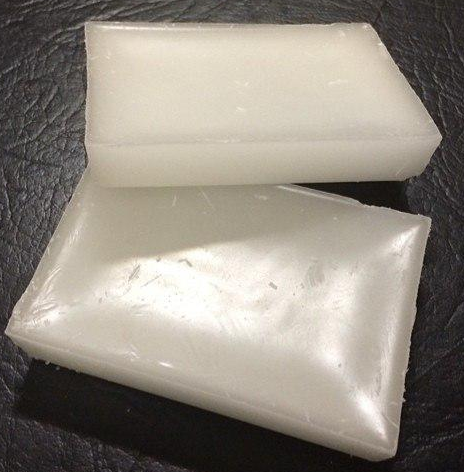Definition of Semi-Refined Paraffin Wax
Semi-Refined Paraffin Wax is a solid substance derived from either one of Petroleum, Coal, or Shale. It constitutes of a mixture of Hydrocarbon molecules with anywhere between twenty and forty Carbon atoms. It has a very unreactive nature. These waxes are categorized by oil content and the degree of refinement. Semi-Refined Paraffin Waxes oil Content is between 1% to 10%.
Paraffin wax wacas first created in 1830 by the German chemist Karl von Reichenbach when he tried to develop the means to efficiently separate and refine the waxy substances naturally occurring in petroleum. Paraffin represented a major advance in the candlemaking industry, because it burned more cleanly and reliably, and was cheaper to manufacture than any other candle fuel. Paraffin wax initially suffered from a low melting point; however, this shortcoming was later remedied by the addition of harder stearic acid. The production of paraffin wax enjoyed a boom in the early 20th century as a result of the growth of the meatpacking and oil industries, which created paraffin and stearic acid as byproducts .

Applications Of Semi-Refined Paraffin Wax
- Candles, torches, tapers, matches, floor polishes
- Car polishes, corrosion protectors
- Electrical industries, cable filling compounds
- Tires and rubber products, as ozone protection
- Paper production
- Carbon paper, crayons and pencils
- Investment casting
- Anti-caking agent, moisture repellent, and dustbinding coatings for fertilizers
- Agent for preparation of specimens for histology
- Bullet lubricant – with other ingredients, such as olive oil and beeswax
- Phlegmatizing agent, commonly used to stabilise/desensitize high explosives such as RDX
- Crayons
- Solid propellant for hybrid rocket motors
- Component of surfwax, used for grip on surfboards in surfing
- Component of glide wax, used on skis and snowboards
- Friction-reducer, for use on handrails and cement ledges, commonly used in skateboarding
- Ink. Used as the basis for solid ink different color blocks of wax for thermal printers. The wax is melted and then sprayed on the paper producing images with a shiny surface
- Microwax: food additive, a glazing agent with E number E905
- Forensic investigations: the nitrate test uses paraffin wax to detect nitrates and nitrites on the hand of a shooting suspect
- Antiozonant agents: blends of paraffin and micro waxes are used in rubber compounds to prevent cracking of the rubber; the admixture of wax migrates to the surface of the product and forms a protective layer. The layer can also act as a release agent, helping the product separate from its mould
- Mechanical thermostats and actuators, as an expansion medium for activating such devices
- “Potting” guitar pickups, which reduces microphonic feedback caused from the subtle movements of the pole pieces
- “Potting” of local oscillator coils to prevent microphonic frequency modulation in low end FM radios
- Textile manufacturing processes, such as that used for Eisengarn thread
- Wax baths for beauty and therapy purposes
- Thickening agent in many paintballs
- Moisturiser in toiletries and cosmetics such as Vaseline.
- Prevents oxidation on the surface of polished steel and iron
- Phase change material for thermal energy storage
- Manufacture of boiled leather armor and books
- Skateboard wax
- Paraffin microactuator
- Neutron radiation shielding
- Waterproofing agent for waxed cotton garments and commercially important in the early water proofing of ship sails
- In Occupational and Physical therapies paraffin wax baths are used to warm and loosen connective tissue. They are mainly used in hand therapy
- Used as the main additive in Log Sealers
Packing Of Semi-Refined Paraffin Wax
Semi refined paraffin wax 1-1.5% oil content packing is 5 kg slabs; in the carton, pp (polypropylene) bags or gunny.








